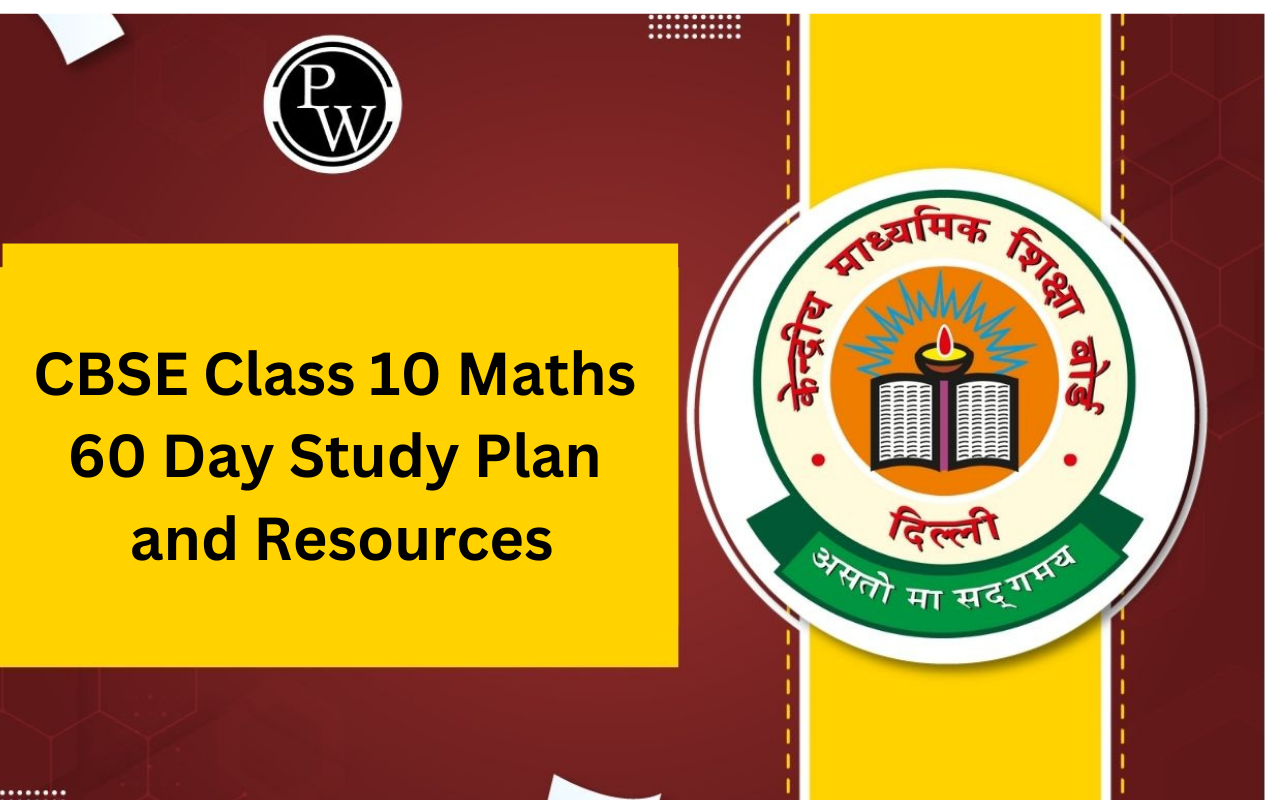

CBSE Class 10 Science Notes Chapter 14: CBSE Class 10 Science Notes Chapter 14 are vital for learning as they establish the foundation for principles applied later. It's crucial to explore this chapter as exam questions are likely to stem from here.
The CBSE Class 10 Science Notes Chapter 14 notes play a key role. Crafted by experts, these revision notes give an advantage over peers with clear explanations of challenging topics in simple language. Class 10 Science Chapter 12 notes are accessible in PDF format online for free download. This resource enables stress-free revision of crucial concepts in Class 10 Science Chapter 14. It provides free CBSE Solutions (NCERT) and study materials to assist students.CBSE Class 10 Science Notes Chapter 14
CBSE Class 10 Science Notes Chapter 14 is a great revision tool for CBSE Class 10 students about to appear for their CBSE class 10 science exams. Here are the detailed notes with simple explanations:Energy and Its Sources
Energy is the inherent ability to carry out tasks or the collective power obtained from our natural reservoirs. It manifests in diverse forms, capable of transformation between different states. Usable energy, when employed, disperses into less usable forms within the environment. Predominantly sourced from natural elements like the sun, oceans, fossil fuels, and wind, energy undergoes conversion into electrical forms integral to our daily activities. This conversion process facilitates the harnessing of energy from its primary origins, ensuring its applicability for various needs. In essence, the dynamic nature of energy allows it to exist in multiple forms, sustaining life and powering human activities through its continuous transformation and utilisation.CBSE Class 10 Science Notes Chapter 14 PDF Download
Renewable and Non-Renewable Sources of Energy
Energy can be broadly categorised into two main types: renewable and non-renewable. Non-renewable resources, such as coal, nuclear energy, and oil, are finite and require extended periods to replenish. These sources are limited and can lead to depletion over time. On the other hand, renewable energy sources, often referred to as clean energy, are continually replenished by natural processes. Examples of renewable energy include solar and wind energy, which harness the power of the sun and wind, respectively. Unlike non-renewable sources, renewable energy has the advantage of being sustainable and doesn't deplete over time. The utilisation of renewable energy aligns with environmentally conscious practices, offering a more sustainable and eco-friendly alternative to non-renewable sources. As the world faces increasing concerns about resource scarcity and environmental impact, the promotion and adoption of renewable energy sources become crucial for a sustainable energy future.A Good Source of Energy
Sources can be categorised as renewable and nonrenewable. A good source of energy doesn't get used up quickly and is often called renewable.What Is Good Fuel?
An ideal source of energy should be easily available, simple to store and transport, capable of doing a lot of work per unit mass and volume, and economical.Conventional Sources of Energy
Energy sources that have been in use for a long time or widely adopted globally are conventional sources. Wood and coal are common sources of heat energy. Examples: Fossil fuels, hydropower. Conventional sources are commercial and non-commercial.Fossil Fuels
Fossil fuels form from the compression of dead organic matter over millions of years. We heavily depend on them for our work. However, they are non-renewable and finding alternatives is crucial to avoid an energy crisis.Disadvantages of Burning Fossil Fuels
Burning fossil fuels produces byproducts causing air pollution, leading to acid rain and the greenhouse effect. Gases emitted contribute to global warming.Thermal Power Plants
These plants burn fossil fuels to produce electricity. Steam generated from burning coal moves turbines, generating electricity. They are often located near coal or oil fields for easier transmission.Hydropower Plants
Hydropower plants harness energy from flowing water by strategically positioning turbines, which convert the kinetic energy of the water into electricity. These plants are commonly situated in close proximity to dams or waterfalls, where the natural movement of water is substantial and efficiently utilised to generate electrical power.Turbines
Turbines are mechanical devices that harness kinetic energy by rotating. They efficiently convert this energy into useful work, typically accomplished through a dynamo. Essential components in power plants, turbines play a crucial role in electricity generation by utilising various energy sources to drive their rotation and produce electrical power.Dams
Dams are constructed as barriers to impound water, creating reservoirs. The stored water's gravitational potential energy is harnessed to generate hydroelectricity. As water is released, it flows through turbines, converting kinetic energy into electrical energy. Dams play a crucial role in sustainable energy production by facilitating the controlled release of water, ensuring a continuous and reliable source for hydroelectric power generation.Fuels
Biomass is derived from living things. In India, cow dung is used for fuel due to the abundant livestock population. Biogas is produced by decomposing cow dung and plant matter in a digester.Wind Energy
Wind energy is an environmentally friendly source generated by harnessing the kinetic energy of wind using windmills.Advantages and Limitations of Wind Energy
Advantages: Environment-friendly, efficient, renewable. Limitations: Requires constant wind speeds, backup storage, large land areas, high initial costs, and regular maintenance.Solar Energy
Solar energy is light and heat from the sun. Solar cookers and water heaters use solar energy. Solar cells convert solar energy into electricity. Advantages: No moving parts, require little maintenance, can be set up in remote areas. Disadvantages: Requires special-grade silicon, uses expensive silver for interconnections.Energy from the Sea
Seas and oceans are sources of kinetic and potential energy.Tidal Energy
Tides, caused by the moon's gravitational pull, produce tidal energy. Dams constructed near sea openings harness this energy.Wave Energy
Wave energy captures the kinetic energy generated by ocean waves, converting it into electricity. This method is effective in regions with robust wind patterns that produce substantial wave activity. However, the practical implementation of wave energy is constrained to locations where strong winds consistently generate significant wave power.Ocean Thermal Energy
Ocean Thermal Energy exploits temperature variations in ocean water to generate power. By utilising the contrast between surface and deep-water temperatures, this renewable energy source taps into the natural heat gradient of the oceans. Warm surface water is used to vaporise a substance, typically ammonia, which then drives turbines to produce electricity. As the vapour condenses with cold deep-sea water, a continuous cycle is created. This eco-friendly method harnesses the immense thermal potential of the ocean, providing a sustainable energy solution with minimal environmental impact.Geothermal Energy
Geothermal energy taps into Earth's internal heat by utilising steam produced from underground hotspots. This steam, emerging from the Earth's interior, is employed to drive turbines, converting the thermal energy into electricity.Nuclear Energy
Nuclear energy harnesses the power of nuclear fission within reactors to generate electricity. In this process, the nucleus of a heavy atom, such as uranium or plutonium, is bombarded with neutrons, causing the atom to split and release an immense amount of energy. The released energy manifests as heat, which is then used to produce steam from water. This steam, in turn, drives turbines connected to generators, ultimately generating electricity. Nuclear fission stands out as a highly efficient means of electricity production due to the substantial energy release from a single fission event. However, it comes with challenges, including the management of radioactive waste and concerns over safety. Despite these issues, nuclear energy contributes significantly to global electricity generation, providing a continuous and reliable power source with a minimal environmental footprint compared to certain fossil fuels. The controlled nature of nuclear fission in reactors enables a consistent and potent supply of electricity to meet the demands of various industries and households.Disadvantages of Using Nuclear Energy
The drawbacks of utilising nuclear energy are multifaceted. Firstly, the management of nuclear waste poses a significant hazard, given its radioactive nature, necessitating secure long-term disposal solutions. Secondly, the establishment and maintenance of nuclear facilities involve substantial costs, making nuclear energy economically challenging. Furthermore, the finite availability of uranium, a key nuclear fuel, raises concerns about long-term sustainability. Additionally, the potential for the destructive misuse of nuclear technology, such as in the development of weapons, adds a critical layer of global security apprehension. These disadvantages underscore the need for stringent safety measures, effective waste management strategies, and continuous exploration of alternative, more sustainable energy sources.Nuclear Fusion
Nuclear fusion is a process where lighter atomic nuclei, typically isotopes of hydrogen, combine to form a heavier nucleus, releasing a substantial amount of energy. Unlike nuclear fission, which involves splitting heavy nuclei, fusion harnesses the same powerful reaction occurring in the sun. The most prevalent fusion reaction involves isotopes of hydrogen, deuterium, and tritium, fusing to create helium and releasing energy. The key advantage of nuclear fusion lies in its potential for generating vast amounts of clean and sustainable energy. It produces minimal radioactive waste compared to nuclear fission, reducing environmental concerns. The fusion process mimics the sun's energy production, making it an abundant and virtually limitless source. Combining lighter nuclei to produce a heavier nucleus releases a vast amount of energy. The mass deficit is given by Einstein's equation E=mc2.CBSE Class 10 Science Notes Chapter 16
Benefits of CBSE Class 10 Science Notes Chapter 14
CBSE Class 10 Science Notes for Chapter 14, focusing on the magnetic effects of electric current, offer students several benefits in their learning journey: 1. Comprehensive Understanding: The notes provide a thorough and comprehensive explanation of the fundamental concepts related to the magnetic effects of electric current. This ensures that students have a clear understanding of the theoretical aspects of the chapter. 2. Clarity in Concepts: The notes aim to simplify complex topics, providing clarity on key concepts. This clarity is essential for students to grasp the interrelation between electricity and magnetism, fostering a strong foundation for further studies. 3. Exam Preparation: With a structured format, the notes aid students in organising their study materials effectively. Key points, formulas, and relevant details are presented concisely, facilitating efficient exam preparation. 4. Visual Aid: The inclusion of diagrams, illustrations, and examples in the notes serves as visual aids, helping students visualise abstract concepts. This visual support enhances comprehension and retention of information. 5. Real-world Applications: The notes delve into practical applications of magnetic effects, connecting theoretical knowledge to real-world scenarios. Understanding the applications of these concepts can deepen students' appreciation for the relevance of the subject in daily life. 6. Problem-solving Approach: The notes often include solved examples and practice problems, enabling students to apply theoretical knowledge to solve numerical and conceptual problems. This approach enhances problem-solving skills, crucial for exams. 7. Time Management: By providing a structured overview of the chapter, the notes assist students in managing their study time efficiently. Students can prioritise topics based on their understanding and allocate time accordingly. 8. Supplement to Classroom Teaching: The notes serve as a valuable supplement to classroom teaching, offering a resource for students to revisit topics covered in class. This reinforcement aids in better retention of information. 9. Preparation for Higher Studies: A solid understanding of the magnetic effects of electric current is foundational for future studies in physics and related fields. These notes lay the groundwork for advanced concepts in electromagnetism. 10. Self-assessment: Some notes may include self-assessment questions or quizzes, allowing students to evaluate their understanding independently. This self-assessment can identify areas that need further clarification or practice. 11. Conceptual Bridge: The notes establish a conceptual bridge between previously learned topics and the magnetic effects of electric current. This ensures a smooth transition for students, linking their existing knowledge to the new concepts introduced in the chapter. 12. Revision Aid: As a concise summary of the chapter, the notes serve as an effective revision aid. Students can quickly review key points and concepts before exams, reinforcing their memory and boosting confidence. 13. Language Clarity: The notes maintain a language clarity suitable for the target grade level, making complex scientific terms and explanations accessible. This linguistic approach accommodates diverse learning styles and linguistic abilities among students. 14. Interactive Elements: Some notes may include interactive elements such as hyperlinks to additional resources, online simulations, or multimedia content. These interactive features engage students in a dynamic learning experience, catering to varied learning preferences.CBSE Class 10 Science Notes Chapter 12
How to Prepare With CBSE Class 10 Science Notes Chapter 14
Preparing effectively with CBSE Class 10 Science Notes for Chapter 14, "Sources of Energy," involves strategic planning and thorough understanding. Here's a detailed guide on how to utilise these notes for optimal preparation: 1. Understanding the Chapter Structure: Begin by understanding the structure of the chapter. Identify key topics like conventional and non-conventional sources of energy, their advantages, and disadvantages. 2. Active Reading: Engage in active reading of the notes. Highlight important concepts, definitions, and formulas. Take notes or create mind maps to reinforce understanding. 3. Conceptual Clarity: Focus on achieving conceptual clarity. Understand the working principles of various energy sources, such as wind energy, solar energy, and nuclear energy. 4. Note-Textbook Integration: Integrate your notes with the textbook. Cross-reference concepts to ensure comprehensive coverage. Use the notes as a supplement to the textbook, not a replacement. 5. Problem-Solving Practice: Practise numerical problems related to energy calculations. Apply formulas introduced in the notes to solve problems. This enhances problem-solving skills and numerical proficiency. 6. Visual Aids Utilisation: If available, make use of visual aids such as diagrams, charts, or graphs present in the notes. Visual representation enhances understanding and aids in retaining information. 7. Self-Assessment: Regularly assess your understanding with self-assessment quizzes or questions provided in the notes. Identify weak areas and revisit those sections for reinforcement. 8. Discussion and Group Study: Engage in discussions or group study sessions. Share and compare notes with peers. Explaining concepts to others reinforces your own understanding. 9. Past Papers and Sample Papers: Practice with past examination papers and sample papers. This familiarises you with the exam pattern, question types, and helps manage time during the actual exam. 10. Online Resources: Supplement your notes with reputable online resources. Explore educational websites, videos, or simulations that provide additional insights into energy sources. 11. Seek Clarification: If any concept remains unclear, don't hesitate to seek clarification from teachers or classmates. Understanding every aspect of the chapter is crucial for comprehensive preparation. 12. Regular Revision: Implement a regular revision schedule. Frequent revision, especially closer to exams, reinforces learning and improves retention. 13. Interactive Learning Tools: Explore interactive learning tools related to energy sources. Online simulations or virtual labs can provide a hands-on experience, deepening your understanding of practical aspects. 14. Real-life Applications: Relate the theoretical concepts from the notes to real-life applications. Understand how different energy sources are used in everyday life and industrial processes. This connection enhances practical knowledge. 15. Environmental Impact Analysis: Consider the environmental impact of various energy sources. The notes might provide insights into how different sources contribute to or mitigate environmental issues. Understanding these aspects adds a broader perspective. 16. Current Affairs Integration: Stay updated on current affairs related to energy sources. The field of energy is dynamic, and new developments or advancements might be relevant. Integrating current information with your notes showcases a holistic understanding.CBSE Class 10 Science Notes Chapter 14 FAQs
Why is it essential to study energy resources in CBSE Class 10 Science Chapter 14?
Understanding energy resources is crucial for addressing environmental issues, making informed energy choices, and ensuring sustainable development.
What are the major conventional energy sources discussed, and what are their environmental impacts?
The chapter covers traditional energy sources like coal, oil, and natural gas, examining their environmental consequences and impact on climate change.
How does CBSE Class 10 Science Chapter 14 address renewable energy?
The chapter explores renewable energy sources such as solar, wind, and hydroelectric power, emphasising their benefits in terms of sustainability and reduced environmental impact.
What role does technology play in promoting energy efficiency, and are there specific examples discussed?
The chapter discusses technological advancements contributing to energy efficiency, including smart grids, energy-efficient appliances, and innovations in energy conservation.
How does the chapter highlight the global perspective on energy usage and conservation?
CBSE Class 10 Science Chapter 14 provides insights into global energy challenges, emphasising the importance of responsible energy consumption and conservation practices for a sustainable future.
🔥 Trending Blogs
Talk to a counsellorHave doubts? Our support team will be happy to assist you!

Check out these Related Articles
Free Learning Resources
PW Books
Notes (Class 10-12)
PW Study Materials
Notes (Class 6-9)
Ncert Solutions
Govt Exams
Class 6th to 12th Online Courses
Govt Job Exams Courses
UPSC Coaching
Defence Exam Coaching
Gate Exam Coaching
Other Exams
Know about Physics Wallah
Physics Wallah is an Indian edtech platform that provides accessible & comprehensive learning experiences to students from Class 6th to postgraduate level. We also provide extensive NCERT solutions, sample paper, NEET, JEE Mains, BITSAT previous year papers & more such resources to students. Physics Wallah also caters to over 3.5 million registered students and over 78 lakh+ Youtube subscribers with 4.8 rating on its app.
We Stand Out because
We provide students with intensive courses with India’s qualified & experienced faculties & mentors. PW strives to make the learning experience comprehensive and accessible for students of all sections of society. We believe in empowering every single student who couldn't dream of a good career in engineering and medical field earlier.
Our Key Focus Areas
Physics Wallah's main focus is to make the learning experience as economical as possible for all students. With our affordable courses like Lakshya, Udaan and Arjuna and many others, we have been able to provide a platform for lakhs of aspirants. From providing Chemistry, Maths, Physics formula to giving e-books of eminent authors like RD Sharma, RS Aggarwal and Lakhmir Singh, PW focuses on every single student's need for preparation.
What Makes Us Different
Physics Wallah strives to develop a comprehensive pedagogical structure for students, where they get a state-of-the-art learning experience with study material and resources. Apart from catering students preparing for JEE Mains and NEET, PW also provides study material for each state board like Uttar Pradesh, Bihar, and others
Copyright © 2025 Physicswallah Limited All rights reserved.











